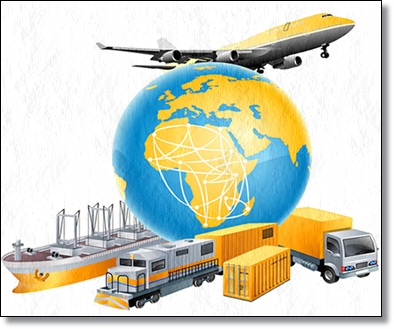Dynamic Transport Modes: Africa's Need of the Hour

 |
It is a sad fact that Africa lacks a dynamic and systematic transportation mode, either by rail, road or air, to connect the continent and make it possible for Africans to trade with one another or even to interact for leisure. Our transportation networks still maintain and to some extent reinforce the old colonial connections with former colonial powers.
For example, our rail infrastructure reinforces the resources extraction and exportation to the West; whilst seldom can one travel between the major regions or even countries and cities in Africa without first having to sojourn in one of the European airports. Yet, as an emerging global economic player, Africa presents great opportunities for the growth of the air transportation industry.
These economic changes are driven by various variables including the growth of the middle class which sustains demand for goods and services.
Air transport is crucial to ensuring sustainable growth in Africa as it has a significant impact on the global economy and the way people live. It is therefore no surprise that aviation has always been viewed as a strategic activity that merits attention from the highest level of government policy makers.
Around the world, a range of different approaches have been used with regard to how air transport is structured and managed, ranging from totally liberalised to highly regulated environments. These different policy choices have also been accompanied by varying degrees of government involvement in the ownership and management of airlines themselves.
Whatever path is taken, it is important that governments should consider the strategic context of air transport when developing a framework to guide the key decisions that have to be made with regard to air transport regulations, policies, investments and oversight.
Africa has attempted to create a more liberal operating environment as part of the continent’s commitment to facilitating global trade, investment and facilitating the free movement of people such as through, for an example that, the Yamoussoukro Declaration. As ambitious and catalytic in nature as it was, the Yamoussoukro Declaration has proven a challenge fully to implement due to various reasons.
While the African market has much economic potential, it is impeded by a number of structural obstacles which still need urgently to be addressed. These include, but are not limited to, poor airport infrastructure characterised by uneven development and which lags behind growth; high user charges; under-capitalisation; the challenge of limited capacity of human resources as well as the perception of poor safety management frameworks and under investment in latest safety technology.
Despite these challenges, both African and other international carriers have been actively pursuing the opportunities found in Africa. South African Airways, which turns 80 years in 2014, Ethiopian Airlines and Kenya Airways are the continent’s largest carriers with each executing distinct business strategies.
It might soon be necessary though that these airlines pursue collaborative efforts in order address this glaring market failure to which we have alluded above pertaining to the inability to connect the continent by air without having to stop-over in Europe or anywhere else! It is accordingly important that all of these airlines be embedded in the African continent and provide an efficient, sustainable and safe mode of travel on the continent.
In South Africa, which is faced with a significant unemployment challenge, the air transport industry is a key employer, providing over 200 000 direct and indirect jobs. These multiplier effects of the air transport industry lift various households out of poverty.
As the aviation and tourism industries both shift their focus to the African market, it is crucial for both industries to identify synergies and aim for alignment in order to achieve their respective objectives in the context of a declining global travel.
South Africa, furthermore, has an innovative, growing and dynamic aerospace industry which includes both and private companies that supply relatively complex components to Original Equipment Manufacturers.
The airline industry is extremely dynamic and is subject to continuous changes. Airlines, governments and [transport associations] are constantly challenged to adapt to new business models, economics of travel and demographic realities. IATA has various strategic objectives including supporting innovation and simplifying air transport to enhance the competitiveness of the mode and respond to ever-changing customer-needs.
The South African Government realises the importance of aviation to its economic development and has in the past ensured increased support for the industry. It is therefore in recognition of this that we are pleased to host you all here in the southernmost tip of this great Continent.
During your deliberations this week, I urge you to continue identifying platforms for innovation, improved safety, transparency, policy direction and efficiencies in the sector.
Finally, I urge and encourage further entrance into Africa by more airlines, especially the low-cost carriers. As Africa grows, we need more, efficient and safe air transport.
By Malusi Gigaba
Minister of Public Enterprises, South Africa.
